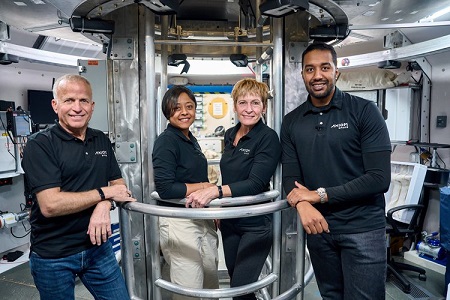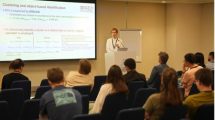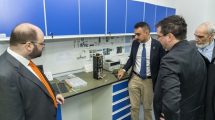 Axiom Space has announced details on the planned research for its upcoming Axiom Mission 2 (Ax-2) to the International Space Station (ISS) – including initial studies focused on the development of future therapeutic applications, studying immune dysfunction in tumor organoid models to predict and prevent cancer, understanding how commercial spaceflight crew members adapt to microgravity, and studying weather modifications in low-gravity settings.
Axiom Space has announced details on the planned research for its upcoming Axiom Mission 2 (Ax-2) to the International Space Station (ISS) – including initial studies focused on the development of future therapeutic applications, studying immune dysfunction in tumor organoid models to predict and prevent cancer, understanding how commercial spaceflight crew members adapt to microgravity, and studying weather modifications in low-gravity settings.
Axiom Space’s crew of four astronauts will conduct more than 20 different experiments while aboard the space station. Data collected in flight will impact understanding of human physiology on Earth and on orbit, as well as establish the utility of novel technologies that could be used for future human spaceflight pursuits and improving life on Earth.
The Ax-2 crew members are Commander Peggy Whitson and Pilot John Shoffner, both from the United States, and mission specialists Ali Alqarni and Rayyanah Barnawi representing the Kingdom of Saudi Arabia.
One of the experiments they will carry out is to test cloud-seeding techniques in a reaction chamber.
Saudi Arabia’s King Fahd University of Petroleum and Minerals is sending the experiment with the help of the Saudi Space Commission and Nanoracks.
Cloud seeding is the process of artificially generating rain by implanting clouds with particles such as silver iodide (AgI) crystals. Cloud seeding has been adopted by many countries to increase precipitation in areas suffering from droughts. In this experiment, cloud seeding will be examined for the first time in space under microgravity conditions. Moist air and AgI crystals will be mixed in a reaction chamber to examine the possibility of nucleation, where water vapour condenses on AgI crystals to form water droplets. The outcome of this experiment will help develop weather control technology to generate artificial rain in future human settlements on the Moon and Mars.
A SpaceX Falcon 9 rocket will launch the Ax-2 crew aboard a Dragon spacecraft to the International Space Station no earlier than spring 2023 from Launch Complex 39A at NASA’s Kennedy Space Center in Florida.
There is a strong focus on projects developing in-space biomanufacturing applications. Four experiments flying on Ax-2 are part of larger partnerships between Axiom Space and academic and industrial partners to perform proof-of-concept studies for in-space biomanufacturing, which has the potential to address current roadblocks in regenerative medicine, drug development, and technology advancement.
Speaking about the details, Christian Maender, executive vice president of in-space solutions at Axiom Space, said: “It is exciting to see the wide range of important research that will be conducted on this mission and to be taking the first steps in developing the future in-space manufacturing applications for some of our biomedical products. We are pleased to have the opportunity with our private astronaut missions to advance this important work as we build a future commercial space economy.”
Axiom Space’s Chief Scientist Dr. Lucie Low added: “We’re delighted to support these scientific and research and manufacturing projects on the Ax-2 mission, as well as provide opportunities to conduct research in microgravity for partner countries and nations with limited access. The projects flying on this mission will advance the use of low-Earth orbit as a manufacturing platform for technologies that could advance human health on Earth, add to our understanding of health in space, and demonstrate how to best operate safely and effectively on orbit.”














Add Comment